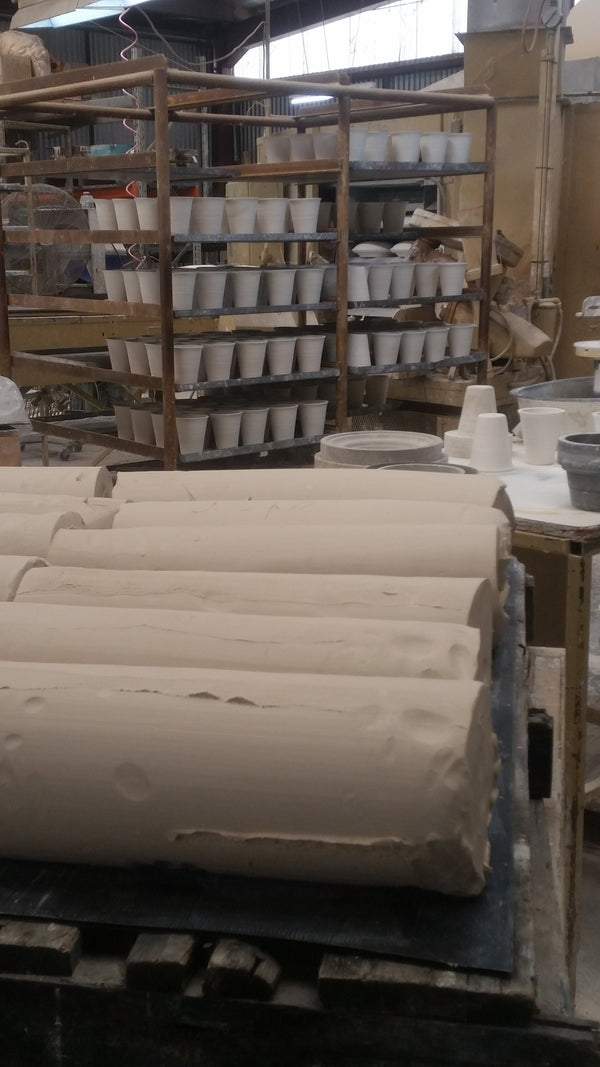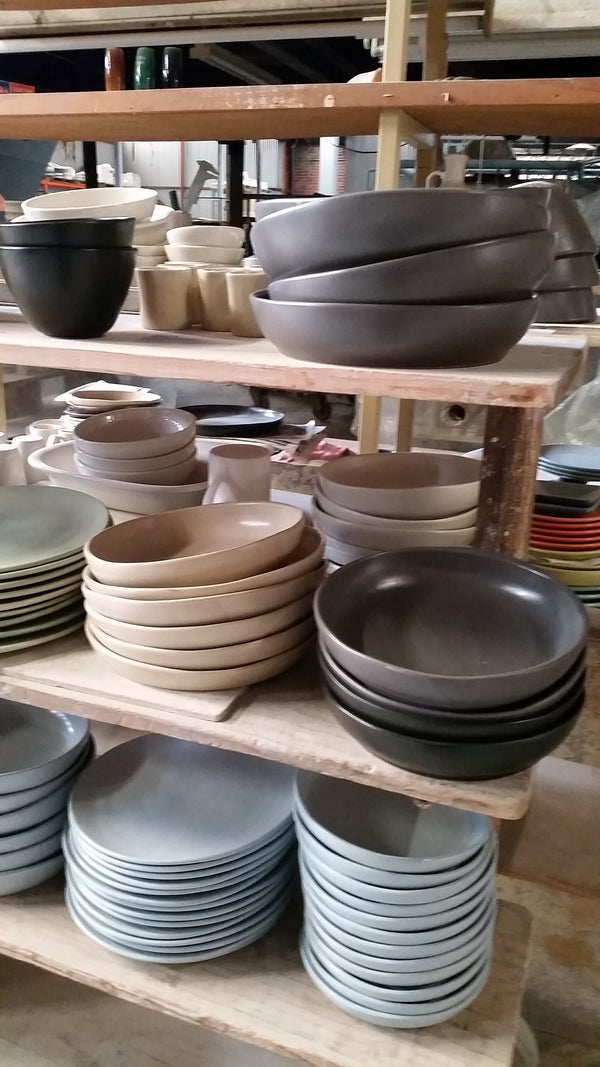It all began in a shack by the Bendigo Creek and continues to this day, six generations later…
Founder George Guthrie
Bendigo Pottery was established in the 1850s, when Scottish migrant George Duncan Guthrie stumbled upon a local clay deposit and created a successful pottery business. Soon, it would rival the great Staffordshire potteries of 19th century England.
Early Pottery 1870-1920
Langley ware took the country by storm, becoming the most popular range produced by the pottery and winning bronze at the 1925 British Empire Exhibition in Wembley. The distinctive brown hues were widely seen in homes and cafes throughout Australia.
Bill Derham at the Stables Gallery, 1970s
Bendigo Pottery was in decline in 1949, with the business struggling to survive. Bill Derham took over in 1968, kickstarting an extraordinary resurgence that included a successful marketing campaign which led to a renewed interest in pottery.
Pottery Art, 2020
The 1970s revival continues under the stewardship of Rod and Sally Thompson, then Raymond Laurens. Transformed into a successful tourist attraction, Bendigo Pottery maintains its function as Australia’s oldest working pottery, while attracting visitors from around the globe.

Different clays, chosen for their properties are sourced from central Victoria. The clays and other raw materials are added to water and blended into slip, a liquid clay. To make plastic clay, the slip is pumped under high pressure through a filterpress to remove excess water. The filtercakes of clay are then pugged to remove air and shape ready for forming.

Four main processes are used to shape the products. Slip casting uses slip poured into plaster moulds in the shape of the product required. Plastic clay is shaped by hand throwing on a pottery wheel, jolleying using a tool to push the clay into a rotating plaster mould and pressing the clay in a hydraulic press between two plaster moulds.

Once the shape has been formed it is necessary to remove any seams left by the moulds and trim any excess clay from the piece. Textured surfaces can be created including the Bendigo Pottery signature band of circles embossed with a coggle wheel. All pieces are then hand sponged to give a smooth even surface before being placed in the drying room.

When the pieces are dry they are loaded into a kiln and fired to 1000oC. The product is now strong enough to handle and also porous so it will absorb glaze. Product for the hand painted range is now decorated by our artist using underglaze colours. Once painted they are bisque fired again to be ready for glazing.

Glazes are mixed using clays and stains to give a range of colours in satin or gloss finishes. Bisque fired product is stamped with our logo than dipped into a container of glaze. The glaze is absorbed into the surface of the clay and becomes dry to touch in 10 seconds. The glazed item is then foot wiped to remove the glaze from underneath where it sits on the kiln shelf.

Glazed product is loaded onto kiln shelves in a large natural gas fired kiln. The kiln is fired to 1250 degrees celsius over 12 hours then cooled over 12 hours before the kiln can be opened and the product removed. All product is then individually inspected to ensure there are no faults from the firing. The result is a quality stoneware item that will last a lifetime.

Our people are our family
Say hello to the Bendigo Pottery family! Our people are proud locals, and we’re committed to honoring the heritage of all of the Bendigo Pottery workers who came before us.
When George Duncan Guthrie stumbled on that clay deposit all those years ago, little could he have imagined that his humble enterprise would become one of Bendigo’s most iconic institutions.
We are proud and humbled to be part of that legacy.